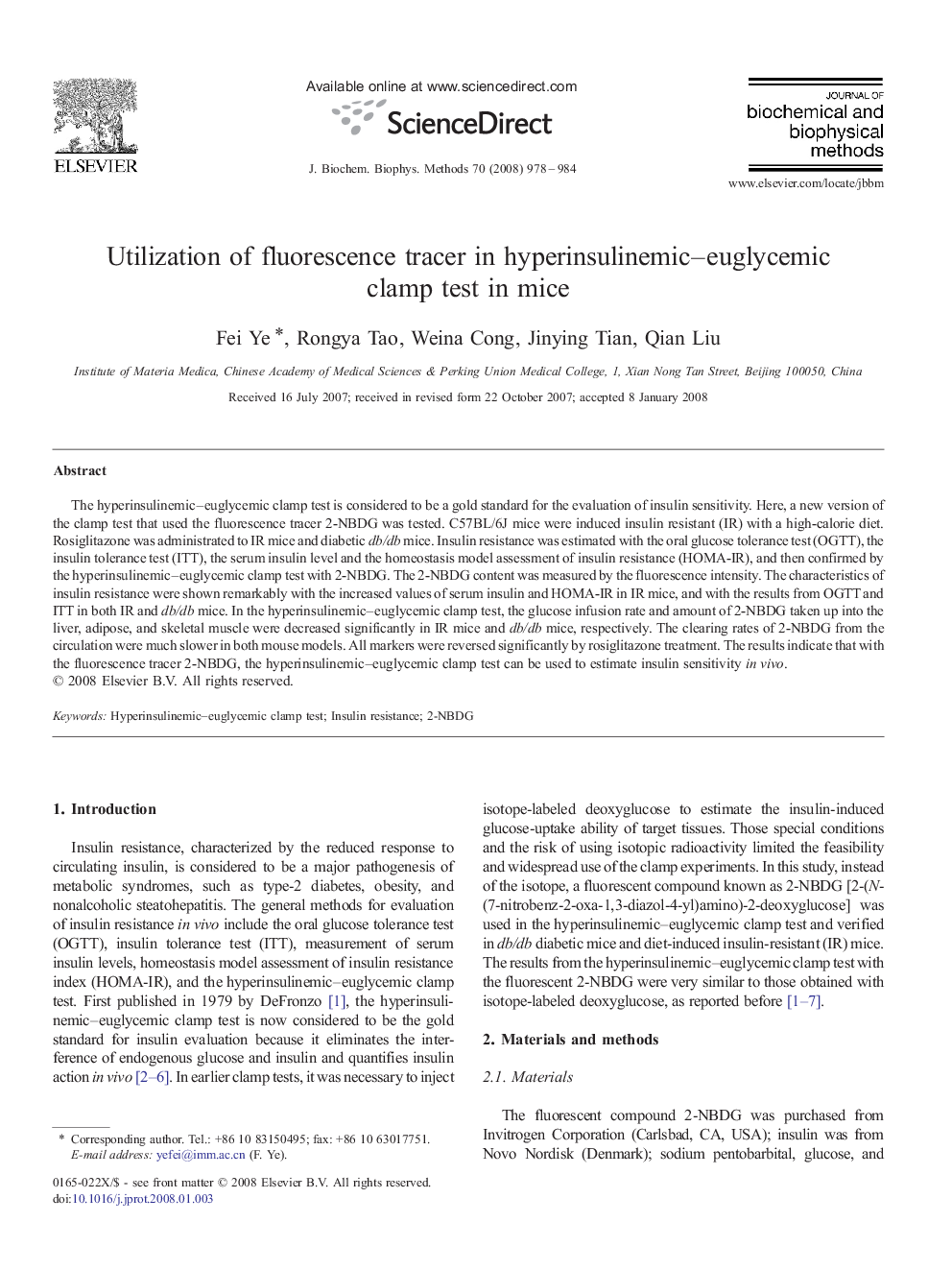| کد مقاله | کد نشریه | سال انتشار | مقاله انگلیسی | نسخه تمام متن |
|---|---|---|---|---|
| 1988377 | 1540394 | 2008 | 7 صفحه PDF | دانلود رایگان |

The hyperinsulinemic–euglycemic clamp test is considered to be a gold standard for the evaluation of insulin sensitivity. Here, a new version of the clamp test that used the fluorescence tracer 2-NBDG was tested. C57BL/6J mice were induced insulin resistant (IR) with a high-calorie diet. Rosiglitazone was administrated to IR mice and diabetic db/db mice. Insulin resistance was estimated with the oral glucose tolerance test (OGTT), the insulin tolerance test (ITT), the serum insulin level and the homeostasis model assessment of insulin resistance (HOMA-IR), and then confirmed by the hyperinsulinemic–euglycemic clamp test with 2-NBDG. The 2-NBDG content was measured by the fluorescence intensity. The characteristics of insulin resistance were shown remarkably with the increased values of serum insulin and HOMA-IR in IR mice, and with the results from OGTT and ITT in both IR and db/db mice. In the hyperinsulinemic–euglycemic clamp test, the glucose infusion rate and amount of 2-NBDG taken up into the liver, adipose, and skeletal muscle were decreased significantly in IR mice and db/db mice, respectively. The clearing rates of 2-NBDG from the circulation were much slower in both mouse models. All markers were reversed significantly by rosiglitazone treatment. The results indicate that with the fluorescence tracer 2-NBDG, the hyperinsulinemic–euglycemic clamp test can be used to estimate insulin sensitivity in vivo.
Journal: Journal of Biochemical and Biophysical Methods - Volume 70, Issue 6, 24 April 2008, Pages 978–984